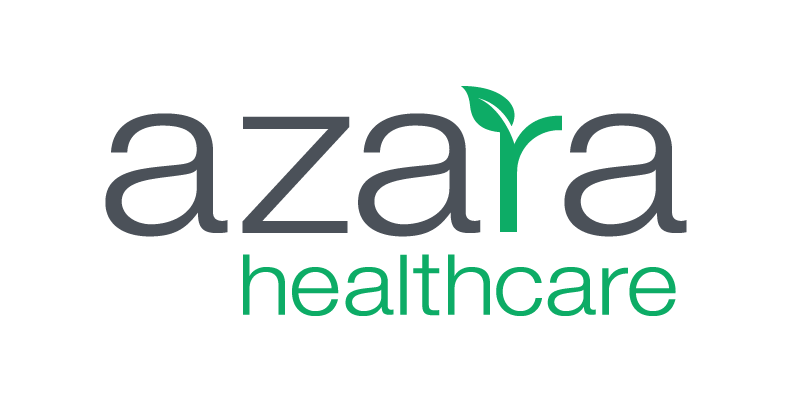
A Sustainable Business Approach to App Store Optimization (ASO)

ASO — that’s app store optimization — can be a challenge for ScaleUp businesses, especially those non-native to the mobile space.
While many aspects of ASO will come naturally to any marketer with experience optimizing search, website, or media performance, it’s also a unique domain with its own quirks, rules, and software tools.
Furthermore, as it straddles the border of what’s traditionally considered “product” and “marketing,” it’s liable to become an inter-departmental hot potato.
Many Insight portfolio companies offer mobile apps, so we’ve had the opportunity to observe how the best in the business manage ASO — and we’ve learned a few lessons about what not to do as well. I’m going to share that experience in this article.
But first, let’s get on the same page.
What is app store optimization (ASO)?
ASO is the process of improving the visibility and performance of your mobile apps in the marketplace.
Usually, when folks talk about ASO, they’re talking about the big two: the Apple App Store and the Google Play store. However, there are other places where you might consider applying ASO, such as the Amazon Appstore.
ASO encompasses several jobs, including:
- Optimizing the visibility of apps using keywords to make them appear higher in app store search results, especially for users searching for your competitors.
- Optimizing app titles, descriptions, icons, and other elements to improve click and conversion rates.
- Localization of app listings for other regions and languages.
- Collecting and managing reviews and ratings and making sure reviews are packed full of all the keywords you’re looking to rank for.
Looking for a how-to guide? Here’s a good breakdown of the technical aspects of ASO from AppRadar, an ASO management platform.
Now, let’s get down to the business of ASO:
Who’s typically responsible for ASO?
While it’s easy to lump it in with SEO, CRO, and all the other Os on the marketing team’s list of responsibilities, ASO is a little different — it requires active collaboration between marketing and product.
When looking across our portfolio companies, we see that ASO works best when marketing takes the lead. That’s because most of the skills required to do ASO properly already exist on the marketing team (think: keyword research, A/B testing, competitor analysis, KPI tracking).
However, no ASO initiative is going to work without coordination with product. The product team needs to:
- Ask users at moments of delight for reviews, referrals, and feedback via in-app prompts.
- Provide screenshots, demo videos, and other assets to marketing for use in-app store listings.
- Coordinate with marketing when pushing new releases to the app store, as that’s the primary time an app description can be updated.
- Prioritize fixing nuisance issues that are causing negative user feedback.
One job that product and marketing will need to work together on is responding to user reviews. It’s a best practice to respond to both positive and negative reviews, but it’s not enough to deploy cookie-cutter templated replies.
For example, if a user leaves a one-star review claiming they couldn’t figure out how to use a certain feature, the response shouldn’t just be an apology — it should educate them on how to do so. Then, their feedback should be used by the product team to improve the UX.
That’s going to require active channels of communication between marketing and product.
How should ASO be prioritized?
One thing many ScaleUp companies struggle with is how to prioritize ASO. How important is app store optimization compared to your other marketing initiatives?
Well, it depends. The potential benefits of working on ASO directly correspond to a few factors, like:
- What portion of your user acquisition is happening via organic app store searches vs. other channels?
- Do organically acquired users have significantly better or worse churn rate compared to users acquired through other channels?
- Do organically acquired users have significantly better or worse lifetime value compared to users acquired through other channels?
- How much optimization has been done already? How long has it been since the listings have been optimized?
- Has the competitive set changed significantly since your last review?
Not every app will benefit equally from ASO. Tasks like keyword optimization and A/B testing of app icons will have the most impact on an app whose primary acquisition channel is organic searches within the Google Play Store or Apple App store. For example, if a user is looking for a to-do list app or a PDF scanner, their behavior will probably be to simply search related keywords in the store.
Apps that are primarily targeted at existing users within an ecosystem — say, an e-banking app or the mobile companion to a desktop-based SaaS product — are much less likely to acquire users via organic search. The same goes for well-known apps users are seeking out specifically, like TikTok or Netflix. But if you’re a competitor to TikTok, it helps to be ranked second for all those searches.
Of course, there’s no need to stake these decisions on generalizations. ASO tools like App Annie and Apptopia can help you track the data you need to determine the relative importance of ASO to your business.
What about app store ads?
There’s another part of the marketing team that might need to get involved in your ASO efforts: media and advertising. Apple and Google both offer app store advertising services, which can be an effective way of getting your app in front of more eyeballs. And while ASO typically refers to earning organic traffic, ASO and app store advertising have a ton of overlap.
For example, you’re likely going to target the same keywords in your app store ad campaigns as you do in your optimization work. Sometimes app developers will pay to rank for a keyword while they’re building up their ASO campaign to rank organically. Also, poor performance of an ad campaign may lead you to reconsider your organic keyword targeting. Good research on one end can lead to improved performance on the other.
And when a user clicks on your ad, they end up right on your app store listing — which means your work optimizing that listing is going to directly impact your conversion rate and return on ad spend.
How can you keep tabs on ASO performance?
No sustainable business approach to ASO is complete without performance tracking.
Luckily, tracking the performance of ASO efforts is relatively straightforward, at least compared to other marketing channels. Platforms like App Annie provide immense data but are pricey. For the money, AppRadar and AppFollow offer dashboards that include the same ASO performance scores, which can be useful for big-picture tracking.
You can also use these platforms to dig into more specific KPIs like impressions, views, installs, sales, and even uninstalls and crash reports. Finally, you can use these platforms to track your app’s performance for specific keywords, like how SEO tools track the performance of your web pages.
The bottom line
ASO isn’t something every business is prepared to take on, and you might be surprised by how much work is involved.
But the upside potential is in no doubt: ASO is simple to upskill into and requires many of the same skills most marketing teams already possess.
If you’re an Insight portfolio company and you need help figuring out how ASO fits into your operations, feel free to reach out. We’re happy to help you assess the best structure and workflows for your ASO initiatives.











%20%7C%20Insight%20Partners&_biz_n=1&rnd=646394&cdn_o=a&_biz_z=1752574518008)
%20%7C%20Insight%20Partners&rnd=967705&cdn_o=a&_biz_z=1752574518009)